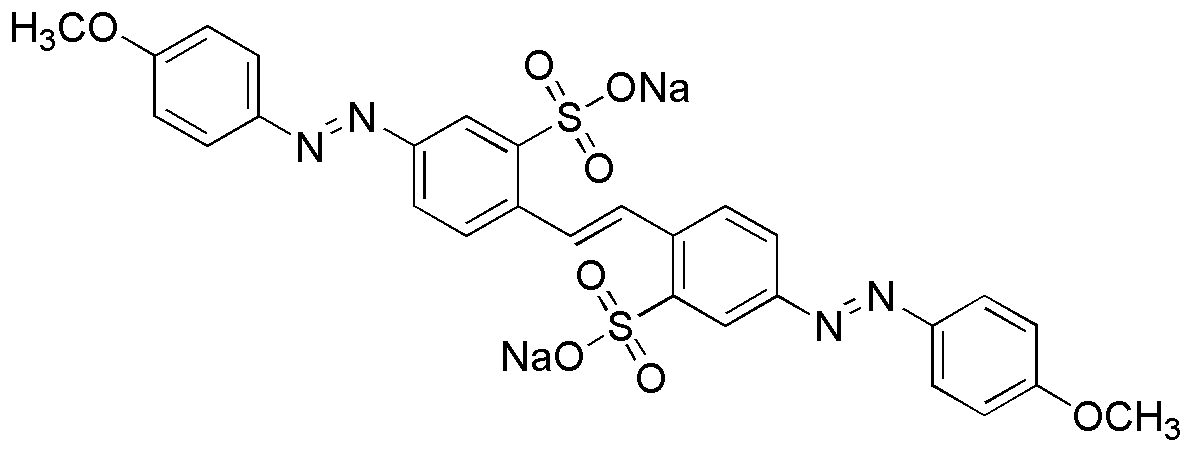Chrysophenine is widely utilized in research focused on:
- Textile Industry: It serves as a dye for fabrics, providing vibrant colors and excellent lightfastness, making it ideal for clothing and upholstery.
- Biological Staining: In laboratories, it is used as a staining agent for biological samples, enhancing visibility under microscopes, which is crucial for cellular studies.
- Photodynamic Therapy: Chrysophenine has applications in medical treatments, particularly in photodynamic therapy for cancer, where it helps target and destroy cancer cells using light activation.
- Environmental Monitoring: It is employed in assessing water quality, as it can indicate the presence of pollutants through colorimetric changes, aiding in environmental research.
- Food Industry: As a food colorant, it is used to enhance the visual appeal of various products, ensuring compliance with safety regulations while providing a natural option compared to synthetic dyes.
General Information
Properties
Safety and Regulations
Applications
Chrysophenine is widely utilized in research focused on:
- Textile Industry: It serves as a dye for fabrics, providing vibrant colors and excellent lightfastness, making it ideal for clothing and upholstery.
- Biological Staining: In laboratories, it is used as a staining agent for biological samples, enhancing visibility under microscopes, which is crucial for cellular studies.
- Photodynamic Therapy: Chrysophenine has applications in medical treatments, particularly in photodynamic therapy for cancer, where it helps target and destroy cancer cells using light activation.
- Environmental Monitoring: It is employed in assessing water quality, as it can indicate the presence of pollutants through colorimetric changes, aiding in environmental research.
- Food Industry: As a food colorant, it is used to enhance the visual appeal of various products, ensuring compliance with safety regulations while providing a natural option compared to synthetic dyes.
Documents
Safety Data Sheets (SDS)
The SDS provides comprehensive safety information on handling, storage, and disposal of the product.
Product Specification (PS)
The PS provides a comprehensive breakdown of the product’s properties, including chemical composition, physical state, purity, and storage requirements. It also details acceptable quality ranges and the product's intended applications.
Certificates of Analysis (COA)
Search for Certificates of Analysis (COA) by entering the products Lot Number. Lot and Batch Numbers can be found on a product’s label following the words ‘Lot’ or ‘Batch’.
*Catalog Number
*Lot Number
Certificates Of Origin (COO)
This COO confirms the country where the product was manufactured, and also details the materials and components used in it and whether it is derived from natural, synthetic, or other specific sources. This certificate may be required for customs, trade, and regulatory compliance.
*Catalog Number
*Lot Number
Safety Data Sheets (SDS)
The SDS provides comprehensive safety information on handling, storage, and disposal of the product.
DownloadProduct Specification (PS)
The PS provides a comprehensive breakdown of the product’s properties, including chemical composition, physical state, purity, and storage requirements. It also details acceptable quality ranges and the product's intended applications.
DownloadCertificates of Analysis (COA)
Search for Certificates of Analysis (COA) by entering the products Lot Number. Lot and Batch Numbers can be found on a product’s label following the words ‘Lot’ or ‘Batch’.
*Catalog Number
*Lot Number
Certificates Of Origin (COO)
This COO confirms the country where the product was manufactured, and also details the materials and components used in it and whether it is derived from natural, synthetic, or other specific sources. This certificate may be required for customs, trade, and regulatory compliance.

